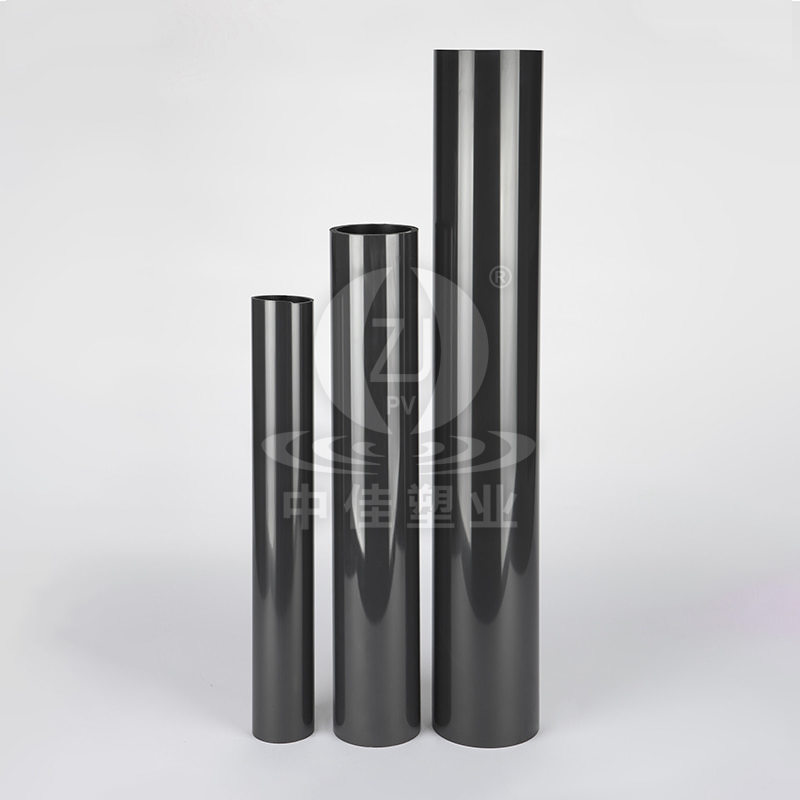

The selection of piping materials for industrial water supply systems is critical to ensuring long-term reliability, safety, and cost-effectiveness. Unplasticized Polyvinyl Chloride (PVC-U) pipes are widely used in various applications due to their corrosion resistance, lightweight nature, and affordability. However, a common question arises: Can PVC-U pipes handle high-pressure industrial water supply systems?
1. Understanding PVC-U Pipes
PVC-U (unplasticized PVC) is a rigid thermoplastic material known for its:
High chemical resistance (suitable for water, acids, and alkalis).
Lightweight and easy installation (compared to metal pipes).
Low cost and long service life (up to 50+ years under proper conditions).
Key Properties of PVC-U Pipes
Property Value/Characteristic
Pressure Rating Typically PN6-PN16 (6-16 bar)
Temperature Range 0°C to 60°C (limited by softening)
Tensile Strength 50-60 MPa
Impact Resistance Brittle at low temperatures

2. Pressure Capacity of PVC-U Pipes
A. Standard Pressure Ratings
PVC-U pipes are classified by Pressure Nominal (PN) ratings, indicating their maximum working pressure at 20°C:
PN6 – 6 bar (87 psi)
PN10 – 10 bar (145 psi)
PN16 – 16 bar (232 psi)
For high-pressure industrial applications (above 10 bar), PN16 PVC-U pipes are the most common choice.
B. Factors Affecting Pressure Resistance
Temperature – PVC softens at higher temperatures, reducing pressure capacity.
At 40°C, max pressure drops by ~20%.
At 60°C, PVC-U is not recommended for pressure applications.
Water Hammer Effect – Sudden pressure surges can crack PVC-U pipes.
Requires pressure relief valves or surge arrestors.
UV Exposure & Aging – Prolonged sunlight degrades PVC, reducing strength.
3. Applications in Industrial Water Supply
Suitable Uses for PVC-U Pipes
Moderate-Pressure Water Supply (≤16 bar)
Cooling Water Systems
Chemical Transport (Non-Reactive Fluids)
Drainage & Low-Pressure Effluent Lines
Unsuitable Applications
Steam or High-Temperature Water (>60°C)
High-Pressure Hydraulic Systems (>16 bar)
Highly Abrasive Slurries
4. Comparison with Alternative Pipes for High-Pressure Systems
| Material | Max Pressure (bar) | Temp. Limit (°C) | Pros | Cons |
|---|---|---|---|---|
| PVC-U | 16 | 60 | Cheap, corrosion-resistant | Brittle, low temp resistance |
| CPVC | 20 | 93 | Higher temp tolerance | More expensive than PVC-U |
| HDPE | 25 | 80 | Flexible, impact-resistant | Lower rigidity |
| Steel | 100+ | 400+ | Extreme pressure/temp handling | Prone to corrosion, heavy |
| Ductile Iron | 64 | 120 | Strong, durable | Heavy, costly |
For pressures above 16 bar, CPVC, HDPE, or metal pipes are better alternatives.
5. Installation & Maintenance Best Practices
A. Proper Installation Techniques
Avoid Excessive Bending – Use fittings instead of forced bends.
Support at Regular Intervals – Prevents sagging and stress fractures.
Use Expansion Joints – Compensates for thermal expansion.
B. Preventing Failures in High-Pressure Systems
Pressure Testing – Hydrostatic test at 1.5x working pressure before use.
Protect from UV & Impact – Bury or insulate exposed pipes.
Avoid Sudden Pressure Changes – Install surge suppressors.
6. Case Study: PVC-U in Industrial Water Systems
Project: Cooling water supply for a chemical plant (10 bar, 30°C)
Solution: PN16 PVC-U pipes with butt-welded joints
Result:
Cost savings of 40% vs. stainless steel.
No corrosion issues after 5 years.
One failure due to improper support (corrected with additional brackets).
7. Future Trends in Industrial Piping
Fiber-Reinforced PVC (PVC-FRP) – Higher pressure & temperature resistance.
Smart PVC Pipes – Embedded sensors for leak detection.
Recyclable PVC Blends – Eco-friendly formulations.
Conclusion
PVC-U pipes can be used for high-pressure industrial water supply, but only within their pressure (≤16 bar) and temperature (≤60°C) limits. For higher demands, CPVC, HDPE, or metal pipes are more suitable.
Final Recommendations
Use PVC-U for:
Low to medium-pressure water supply (≤16 bar).
Corrosive or chemical-laden water.
Cost-sensitive projects.
Avoid PVC-U for:
Steam or high-temperature fluids.
Extreme pressure systems (>16 bar).
Impact-prone environments.
By following proper selection, installation, and maintenance practices, PVC-U pipes can provide a reliable and economical solution for many industrial water supply applications.